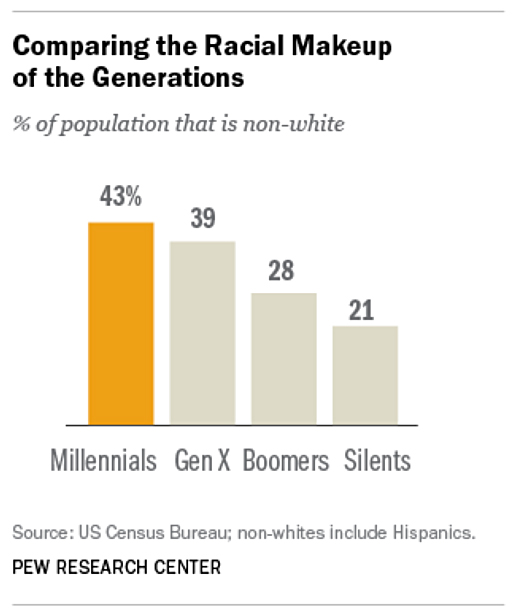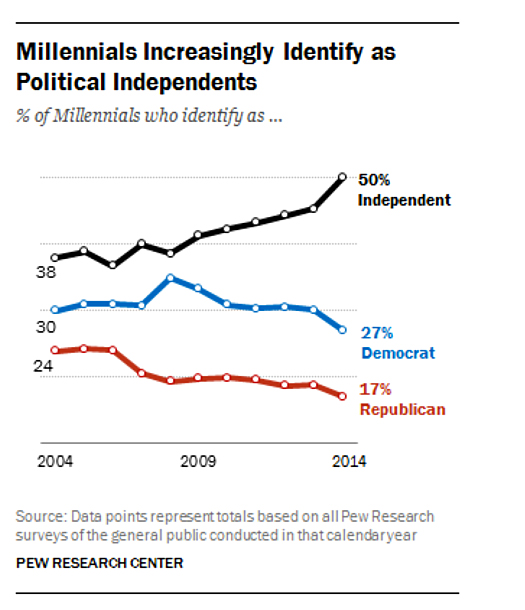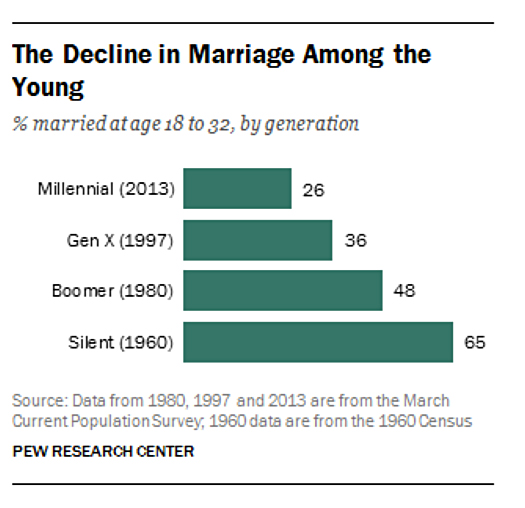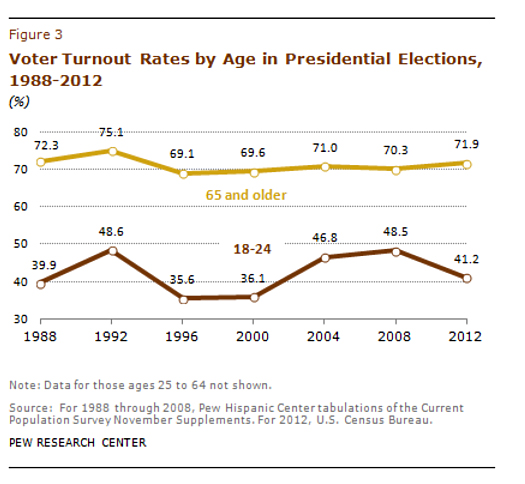A Placemaking Journal
People Get Ready: Here come the Millennials
 Cue up Curtis Mayfield and the Impressions. Last week’s release by the Pew Research Center of its “Millennials in Adulthood” analysis suggests there’s a train a-coming. And its steady progress is likely to force changes in community development over the next couple decades.
Cue up Curtis Mayfield and the Impressions. Last week’s release by the Pew Research Center of its “Millennials in Adulthood” analysis suggests there’s a train a-coming. And its steady progress is likely to force changes in community development over the next couple decades.
Here’s what the Pew report suggests and how it lines up with some other projections of demographic impacts:
First of all, there are a lot of folks in the Millennial age group, who in 2014 are between 18 to 33 years old. They currently comprise about 27 percent of the U.S. population and are destined to increase that share as the other giant generational bulge, Boomers currently 50 to 68 years old, ages out of the picture.
Unlike the Boomer cohort, with its 28 percent non-white population, the Millennials are the most racially and ethnically diverse generation yet, with 43 percent non-whites.
Unlike the Boomers, the Millennials are aging into an unpredictable economic environment, complicated by student loan debt for many and by low-paying, long-hour entrance-level jobs. That’s especially true in places many Millennials want to be — like culture and network-rich urban environments with rising prices for acceptable housing.
Democrats and Republicans hoping to sell this generation on politics as usual face a near-impossible task. Experience growing up with people from a variety of racial and ethnic backgrounds has made Millennials more socially liberal than other generations. And their coming of age in an era of declining trust in institutions has made them more likely to embrace the “independent” political label than their elders.
Here’s another distinction between generations. Whether it’s for financial or lifestyle reasons or some combination of both, Millennials are delaying marriage and families later than older generations at this point in their lives.
So what does all this suggest for housing demand and community planning? With a growing population of risk-averse, cash-strapped singles, what will the impacts be on settlement patterns and housing choices built around easy credit for young families in a booming economy?
Here’s a PlaceShakers post from a year ago outlining the likely prospects for neighborhood locations, housing scales and for sale/for rent choices given the double whammy of aging Boomers and coming-of-age Millennials. And it’s worth repeating this warning from an article in the Nov./Dec. 2010 Washington Monthly by Patrick C. Doherty and Christopher Leinberger:
“Both of these huge demographic groups want something that the U.S. housing market is not currently providing: small, one-to-three-bedroom homes in walkable, transit-oriented, economically dynamic, and job-rich neighborhoods.”
Because we Boomers have so far dominated the housing trends discussion, we’ve tended to see the future challenge as one primarily about an undersupply of choices for aging in dignity in community. The impact of Millennials’ needs and preferences has been treated as a shadow, multiplier effect. If the Millennials share the same preferences and comprise a similarly huge segment of the population, why haven’t their voices made a bigger impact on the people who decide community investment and planning priorities?
One reason is that, despite their numbers, Millennials — and especially the large minority sub-group within the cohort — “punch below their weight,” as another Pew analysis puts it. Their disdain for the political squabbling in the two main political parties underlies their embrace of the “independent” label. And some of that indifference is reflected in their underrepresentation among likely voters. Which gives political leaders the opportunity to delay the inevitable reckoning with demography.
The inevitability of demography, however, imposes a time limit on reality avoidance. With Boomers panicking about their limited choices for aging comfortably and the younger, more diverse generations aging into periods in their lives when they’re likely to vote in numbers more reflective of their demographic clout, change is coming.
So people get ready. Time to get on board.
If PlaceShakers is our soapbox, our Facebook page is where we step down, grab a drink and enjoy a little conversation. Looking for a heads-up on the latest community-building news and perspective from around the web? Click through and “Like” us and we’ll keep you in the loop.






